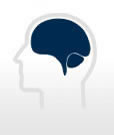Prof. Dr. Martina Manns, Department of Psychiatry, Psychotherapy and Preventive Medicine, Faculty of Medicine

Research Programme:
Hemispheric specializations meaning a functional superiority of one hemisphere for certain perceptual, cognitive, or motor processes represent a core feature of the human brain. For many decades, humans were thought to be unique for having an asymmetrically organized brain. But an increasing number of reports describing various asymmetries in the animal kingdom supplants this long-held view and characterizes cerebral asymmetry as an ubiquitous phenomenon that possibly is not the exception but the rule.
Nevertheless, our understanding about how and why left sided-neuronal circuits operate differently from right ones is still limited. I am using the visual system of birds (especially pigeons) as a model to investigate the neuronal foundations of cerebral asymmetries. In this system, a behavioural lateralization can be associated with morphological left-right differences at the individual as well as the population level. Their development can be attributed to the influence of the epigenetic factor light. This means that asymmetries develop as a consequence of the plastic potential of the maturing visual system, which is stimulated by unbalanced visual input. At the moment, we are running a number of studies to unravel how the brain develops a lateralized functional architecture from the cellular up to the behavioural level. In all these areas PhD projects are possible:
a) Structural organization of the visual system
We investigate the structural organization of the visual pathways by means of tract-tracing and immunohistochemical techniques in
order to unravel the morphological foundations of asymmetrical visual processing.
b) Development of visual lateralization
We examine the developing visual system by means of neuroanatomical and biochemical methods. Pigeons are altricial birds hatching
with closed eyes and an immature visual system. Therefore, we can analyze the morphological and behavioural consequences
of modulations in developmental light experience to understand the neuronal mechanisms, which underlie asymmetry formation.
We are currently especially interested in the role of trophic factors like BDNF as mediators of lateralized visual input.
c) Hemispheric specific processing and its ontogenetic foundations
We investigate which aspects of visual processing are lateralized and how the brain integrates information from both hemispheres
by adopting tasks requiring higher cognitive functions (e.g. spatial orientation, categorization, or transitive reasoning).
Moreover, we want to know how these interactions are influenced by ontogenetic light experiences.
d) Lateralized neurogenesis in the adult pigeon brain
Comparable to the mammalian brain, the pigeon’s olfactory system generates new nerve cells even in the adult brain.
Since olfactory processing is lateralized when pigeons use olfactory cues for navigation, we are currently investigating
the amount and asymmetry of neurogenesis in the pigeon’s olfactory system.


